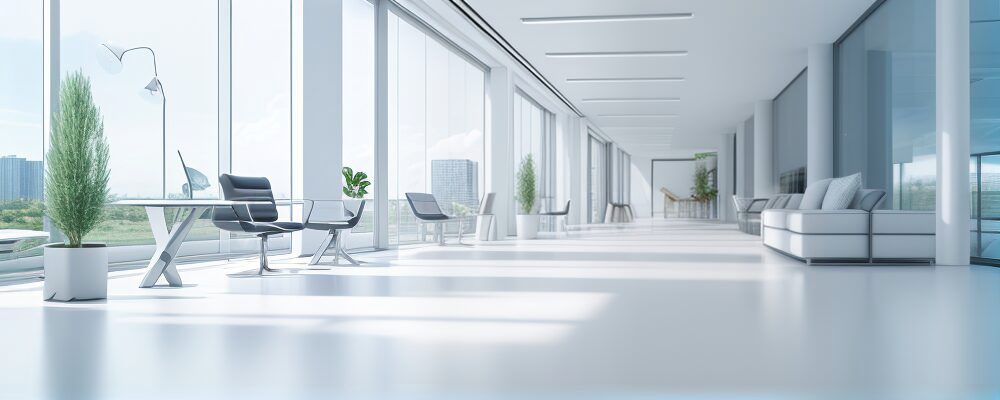Commercial Interior Construction
Transforming commercial interiors goes beyond mere aesthetic upgrades; it’s about creating environments that foster efficiency, innovation, and employee well-being across various sectors. This article delves into how commercial interior construction and design services ranging from Healthcare, Government Facilities to technology, and more.
Benifits
Building & Facility Maintenance
- Enhanced Safety and Compliance
- Increased Lifespan of Assets:
- Improved Efficiency and Cost Savings:
- Enhanced Property Value and User Satisfaction:
Design & Build
- Streamlined Process:
- Cost Savings:
- Enhanced Communication:
- Quality Control:
Solutions
Construction and Renovation:
- Healthcare
- Government Facilities
- Education
- Retail Stores
Transforming Ideas into Reality: Your Premier Choice for Commercial Interior Construction
In the bustling world of business, the environment in which we work plays a pivotal role in fostering innovation, productivity, and a sense of community. Recognizing this, TTS emerges as your quintessential partner, offering a holistic approach to managing all your commercial interior construction needs. With a steadfast commitment to quality craftsmanship, integrity, and professionalism, we not only promise to meet the diverse needs of your business but also to reflect your unique corporate culture through our work.

Interior Construction
Interior construction involves a variety of tasks to create functional and aesthetically pleasing indoor spaces. Here are some common jobs within this field:
-
Painting – Applying paint, wallpaper, and other finishes to walls, ceilings, and building fixtures to improve the appearance of a space.
-
Drywall Installation – Erecting drywall panels to partition the interior of a building, which includes taping, spackling, and sanding to prepare for painting or wallpapering.
-
Flooring Installation – Laying down various types of flooring materials, such as hardwood, laminate, tile, or carpet, to enhance both the functionality and the aesthetics of indoor spaces.
-
Electrical Work – Installing and maintaining electrical systems, including lighting fixtures, switches, and wiring, to ensure adequate lighting and power distribution within the building.
-
Plumbing – Installing and repairing pipes, fixtures, and other plumbing components to provide water access and drainage in kitchens, bathrooms, and other areas requiring water service.
- Carpentry – Building and installing wooden structures and fixtures, such as cabinets, shelving, and trim work, which contribute to both the functionality and design of the space.
- HVAC Installation and Maintenance – Setting up and maintaining heating, ventilation, and air conditioning systems to ensure a comfortable indoor climate.
- Tile Setting – Installing tiles on floors, walls, and other surfaces for durability and aesthetic appeal, often in bathrooms and kitchens.
- Insulation Work – Installing materials to insulate buildings for temperature control and energy efficiency, which can also include soundproofing.
- Ceiling Installation – Installing drop ceilings or other types of ceiling finishes to conceal electrical and mechanical systems, improve aesthetics, and provide sound control.